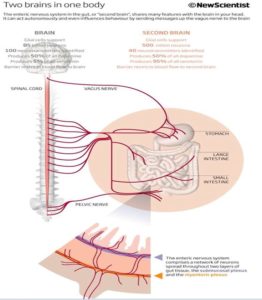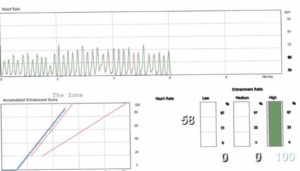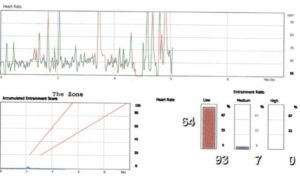Heart Rate Variability & The Vagus Nerve
While working at Sanoviv Medical Institute, a world-renowned functional medical hospital, we learned about one of the most important connections between the mind and body. It was a lesson that would end up having a significant impact on how we approach transformation and healing. As part of our role in developing the psychology and spirituality programs we were fortunate to be trained by some of the best doctors in the world. Dietrich Klinghardt a pioneering docto
* For those of you who are interested in more detailed information about the relationship between heart rate variability, the vagus nerve and health and happiness, please see below.
Take Care of Your Health
What sparked our attention most from Dr. Klinghardts’ message, is that we have the ability to take control of our health and happiness. We can intentionally increase the strength of the vagus nerve and improve all measures of health and well-being. Perhaps we were most intrigued because of our desire to have more effective tools for decreasing stress and improving health. The gold standard in our field revolves around a singular approach of changing thoughts to feel better. It does not include working with the relationship between mind, body and emotions. We started working with biofeedback technology to assess heart rate variability on all of our clients. This information allowed us to assess clients stress levels and witness within seconds to minutes the changes by applying simple relaxation practices.
Regular stimulation of your vagus nerve strengthens neural pathways that connect your mind and body, leading to an increase in positive emotions and homeostasis. Situations that used to trigger stress and tension are now viewed from the filter that says, “I got this.” Activating the relaxation response is like sending a message through your entire body that says, “I am OK. I am safe. Everything is going to work out.” At this point we have conducted 1,000’s of heart rate variability assessments confirming the power we have to impact our health in a very short period of time.
How to Strengthen Vagal Tone
Breathing is one of the fastest and easiest ways to connect the mind and body, improve how you feel and increase vagal tone. The breath you just took is responsible for either increasing or decreasing your blood sugar, inflammation, immune response and feelings of stress. During biofeedback sessions we have seen the most dramatic changes in vagal tone with breathing meditation practices. In a matter of seconds vagal tone begins to improve.
Spinal Breathing Exercise
Find a comfortable position where you can easily feel your spine aligned from your tailbone to the top of your head.
- Inhale through your nose and feel your abdomen rise while bringing your awareness to your tailbone. Imagine your breath rising up through your spine slowly until it reaches the top of your head.
- Exhale through your nose and feel your abdomen gently contract. Focus your awareness on your breath moving back down your spine until it reaches your tailbone.
- Continue with this breathing pattern while finding your own rhythm. Inhale and exhale while moving your breath up and down your spine.
Allow yourself to feel the complete and total support of the surface on which you rest. Should your mind begin to wander at any time, simply note that your mind has wandered and gently and firmly guide your awareness back to your breath and the sensations of your in-breath and out-breath moving up and down your spine.
Heart Rate Variability


Heart rate variability is defined as the beat-to-beat fluctuation in heart rate. The variation between beats is regulated by the vagus nerve and influenced by complex connections between the peripheral nervous systems, heart, brain, and multiple endocrine variables. Heart rate variability is also a dynamic measure used to show emotional changes via heart rhythm patterns. Happiness, joy, and peace create ordered heart rhythm patterns. Anger, resentment, stress, and fear cause disordered heart rhythm patterns.
The Vagus Nerve
The vagus nerve plays a crit
Its strength, known as vagal tone, is not the same in all people yet it is something we all have the capacity to develop.
Bethany E. Kok∗, Barbara L. Fredrickson (2010) Upward spirals of the heart: Autonomic flexibility, as indexed by vagal tone, reciprocally and prospectively predicts positive emotions and social connectedness. Department of Psychology, University of North Carolina at Chapel Hill.
Hilary Stokes Ph.D. and Kim Ward Ph.D. have been a team for 20 years, specializing in mind, body, spirit psychology. They are the authors of the bestselling books The Happy Map: Your roadmap to the habit of happiness and Manifesting Mindset: The 6-step formula for attracting your goals and dreams and founders of Authenticity Associates Coaching and Counseling. They are passionate about combining the best of holistic and traditional approaches to health and happiness. If you are interested in learning the answers to the most frequently asked questions on how to decrease stress and increase happiness sign up for their free video series.










